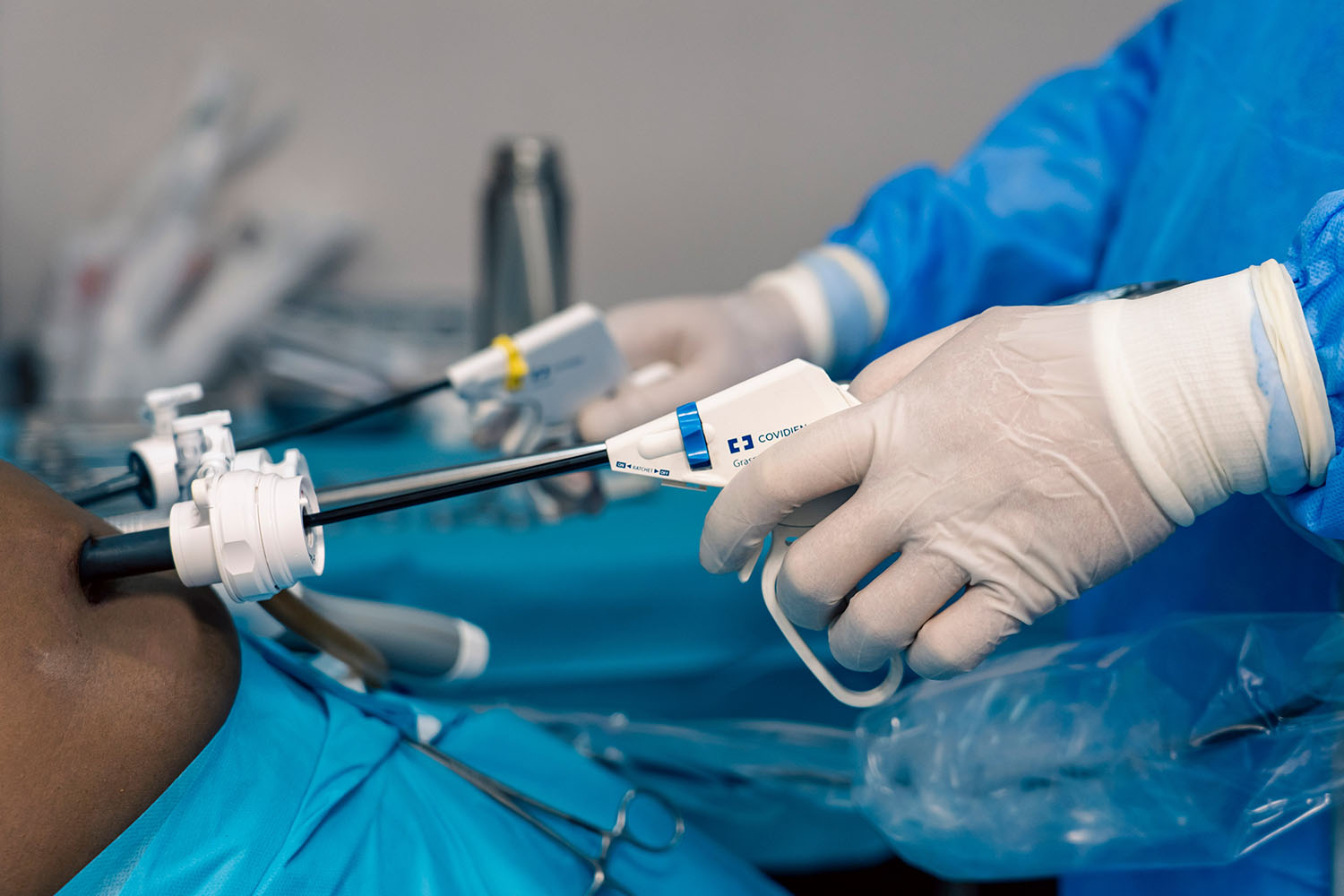Overview
Hernias are a common medical condition that occurs when an organ or tissue protrudes through a weak spot in the surrounding muscle or connective tissue. The most prevalent types are inguinal, femoral, umbilical, and hiatal hernias. Traditionally, hernia repair involved open surgery, but advancements in medical technology have introduced a less invasive option: Laparoscopic Hernia Surgery.
What is Laparoscopic Hernia Surgery?
Laparoscopic Hernia Surgery is a minimally invasive procedure used to repair hernias. It involves small incisions through which a laparoscope (a thin tube with a camera) and surgical instruments are inserted. The camera provides a clear view of the hernia on a monitor, allowing the surgeon to perform the repair with precision.
Advantages of Laparoscopic Hernia Surgery
- Minimal Scarring: Unlike open surgery, which requires a larger incision, laparoscopic surgery involves small cuts, leading to minimal scarring and a better cosmetic outcome.
- Reduced Pain: Patients typically experience less postoperative pain compared to traditional surgery, due to the smaller incisions and less tissue disruption.
- Faster Recovery: The minimally invasive nature of the procedure often results in a quicker return to normal activities. Most patients can resume their daily routines within a few days to a week.
- Lower Risk of Infection: Smaller incisions reduce the risk of postoperative infections, making the procedure safer for patients.
The Procedure
- Preoperative Preparation: Patients are generally advised to avoid eating or drinking for a specific period before surgery. They may also undergo routine tests to ensure they are fit for the procedure.
- Anesthesia: Laparoscopic Hernia Surgery is performed under general anesthesia, ensuring the patient is unconscious and pain-free during the procedure.
- Incisions and Access: The surgeon makes a few small incisions in the abdomen. Through these, the laparoscope and surgical instruments are inserted.
- Repair: The herniated tissue is pushed back into place, and the weakened area is reinforced, often with a synthetic mesh. This mesh helps to strengthen the muscle wall and prevent recurrence.
- Closure: The small incisions are closed with sutures or surgical glue, completing the procedure.
Postoperative Care
After Laparoscopic Hernia Surgery, patients are usually monitored for a few hours in the recovery room. They may experience some discomfort and swelling, which can be managed with prescribed pain medication. Most patients can go home the same day, but it is crucial to follow the surgeon’s postoperative instructions to ensure a smooth recovery.
Risks and Complications
As with any surgical procedure, Laparoscopic Hernia Surgery carries some risks, including:
- Bleeding
- Infection
- Recurrence of the hernia
- Injury to surrounding organs
However, the minimally invasive nature of the surgery generally results in fewer complications compared to open surgery.
Global Perspective
Laparoscopic Hernia Surgery has gained widespread acceptance internationally due to its effectiveness and benefits. Studies from various countries have demonstrated high success rates and patient satisfaction. For instance, research published in the Journal of the American Medical Association found that laparoscopic repair of inguinal hernias resulted in a lower recurrence rate compared to open repair . Similarly, a European study highlighted faster recovery times and reduced postoperative pain with laparoscopic techniques .
Laparoscopic Hernia Surgery represents a significant advancement in the field of hernia repair, offering numerous benefits over traditional methods. Its minimally invasive nature, coupled with a quicker recovery time and reduced pain, makes it an attractive option for patients worldwide. As research continues to support its efficacy and safety, Laparoscopic Hernia Surgery is likely to remain a preferred choice for hernia repair.
Whether you are considering this procedure or simply seeking to understand it better, it’s essential to consult with a qualified healthcare professional to discuss the best treatment options for your specific condition.



